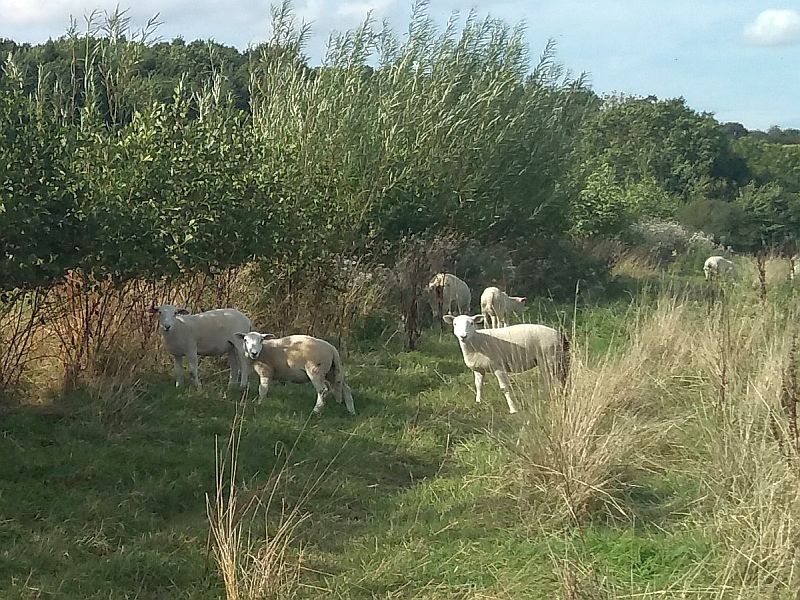
New research has shown willow trees could be used to optimise production in lambs because it has particularly high concentrations of cobalt and zinc.
The study sampled leaves from three native deciduous species – willow, alder and oak – from three sites across the UK and analysed their mineral, energy and protein content.
Willow leaves from all three locations were found to provide sheep with zinc and cobalt at concentrations exceeding the requirement in mg/g of dry matter, in some cases up to 17 times more.
This elevated concentration found in willow leaves could actively correct deficiencies of these minerals in grass, meaning farmers could get better growth from their flock by integrating trees on their land.
The research, led by the Woodland Trust along with Organic Research Centre and other institutions, was carried out to gain a greater understanding of the benefits of silvopastoral agroforestry, the practice of integrating shelterbelts, hedgerows or in-field trees with grazing livestock.
Launching the research at the Oxford Real Farming Conference on Wednesday (8 January) the Woodland Trust’s senior farming adviser Helen Chesshire said: “Trees on farms provide animals with a number of benefits such as shelter and shade as well as supplementing their diets with as tree browse or fodder.
“The Woodland Trust has helped hundreds of farmers put more trees on their farms, and we know we need far more to fight climate change and the nature crisis.
“Our advice is shaped by the best available evidence of what works well for farming and the environment.
“This research adds another compelling reason, recognising the nutritional composition of tree browse and fodder and the supplementary potential for livestock,” she said.
“Ultimately it will help farmers to implement tree-based solutions to enhance livestock performance and health whilst also delivering benefits to the wider environment.”
The research sampled willow, alder and oak leaves from three sites – the Organic Research Centre in Berkshire, the Allerton Project in Leicestershire, and Bangor University’s Henfaes research station – in June and September.
The requirement for cobalt is 0.2mg per kg of dry matter. Willow leaves had around 3.5mg of cobalt per kg of dry matter in the September leaves, 17 times the requirement, and tenfold the requirement at just over 2mg in the spring sample.
Willow also produced the high concentrations of zinc (five times the requirement at 200mg per kg of dry matter) while alder had 50mg and oak around half that.
Dr Nigel Kendall, of the University of Nottingham, said: “There are 22 essential minerals relevant to ruminant nutrition and some of these are prone to imbalances, either providing too much, too little or interacting with other elements.
“The minerals likely to cause issues in grazing ruminants are imbalances in trace elements such as cobalt, selenium, iodine, copper and zinc.
“Our analysis found that tree leaves can be considered good sources of a number of those key minerals within the requirement range for sheep, potentially offering similar or better concentrations than sward.
“The elevated cobalt and zinc concentrations in willow leaves could actively correct deficiencies of these minerals in grass that usually require supplementation.
“This could be especially useful in growing grazing lambs where cobalt deficiency is typically prevailing across the dry summer periods,” he said.
“Lambs tend to perform well in the spring because they are still getting the ewe’s milk, but as they take less and you go into the dry summer period there’s an issue because the cobalt levels in grass begin to deteriorate.
“This means growth can slow or stop all together but by providing access to willow leaves farmers can remedy that. By producing browse and opening a gate into a paddock with trees, or allowing access to a living fence livestock can get a biological supplement in the form of fodder that will benefit growth rate.”
In addition trees planted within a grazing area will support better grass production; via the provision of shelter which warms soils and improvements in water infiltration rates into the soil which enhances the carrying capacity of the pasture in wet periods and water efficiency in droughts.
The study has identified a number of areas that warrant further investigation.
In particular, it urges more practical trials using willow supplements to counter deficiencies in ruminant diets and expanding the species of leaves and sites sampled to improve understanding of the circumstances under which different tree species could be used as a biological supplement.
A further trial into the palatability of willow and its use as a supplement has since been undertaken by the University of Nottingham and the Allerton Project.
Both institutions are now looking at how many trees and what type of planting would be required to support a ruminant diet, how the palatability of leaves from different tree species affect intake and what impact the varying content of anti-herbivorous compounds such as tannins can have on potential medicinal value.
